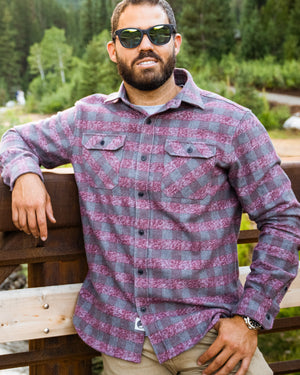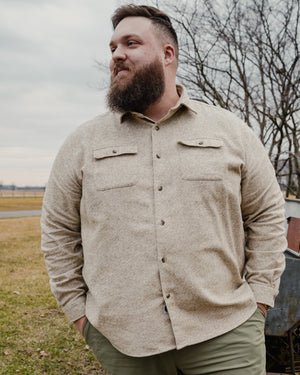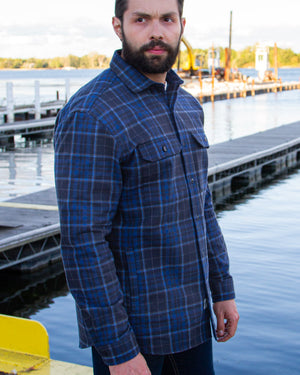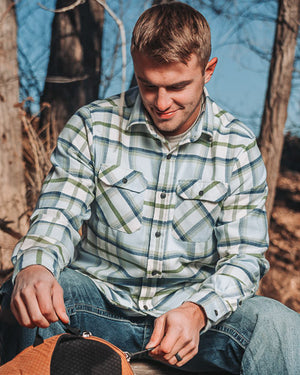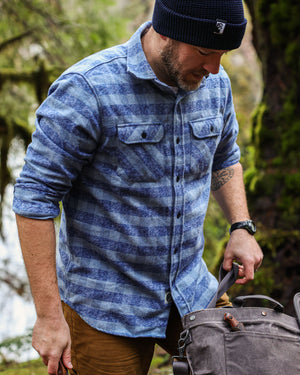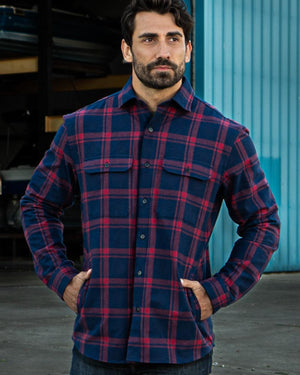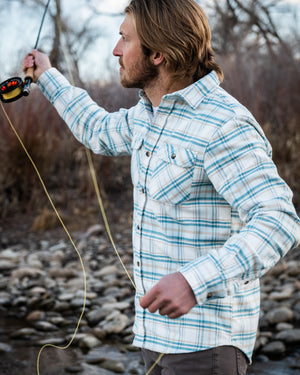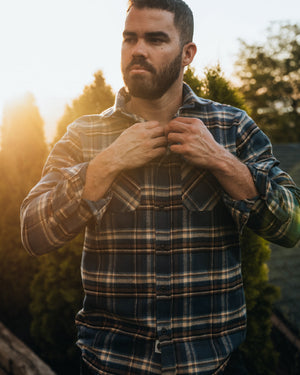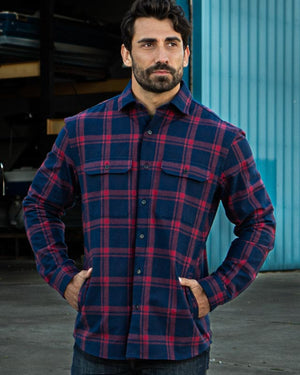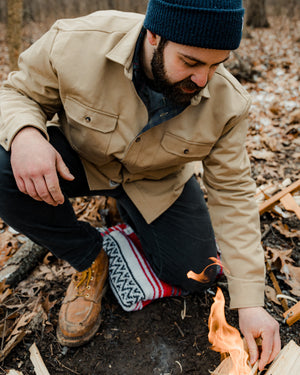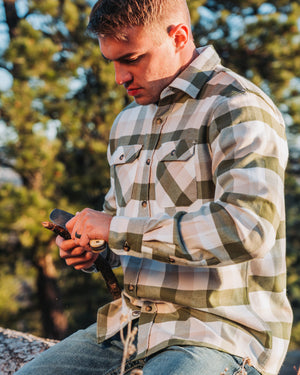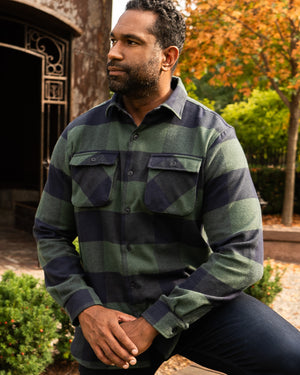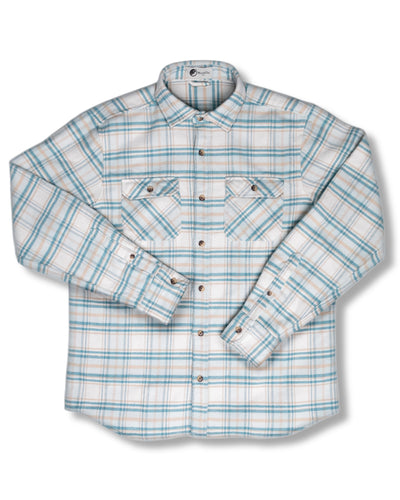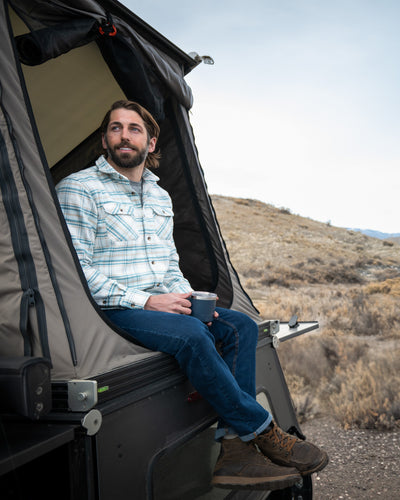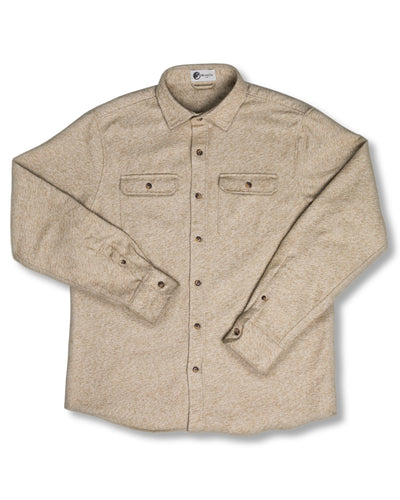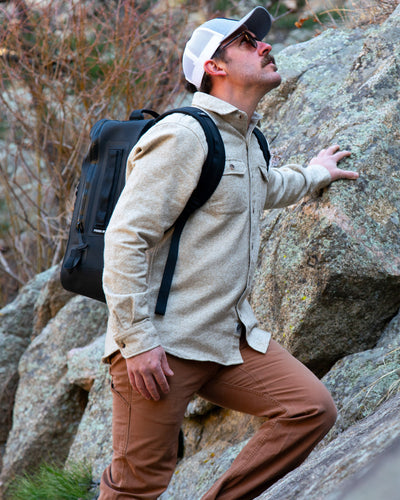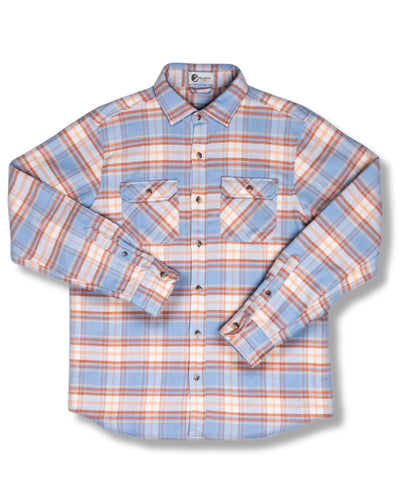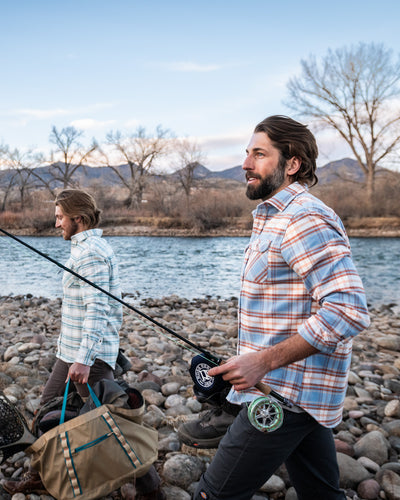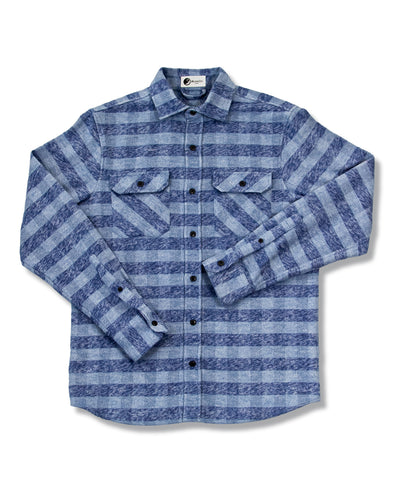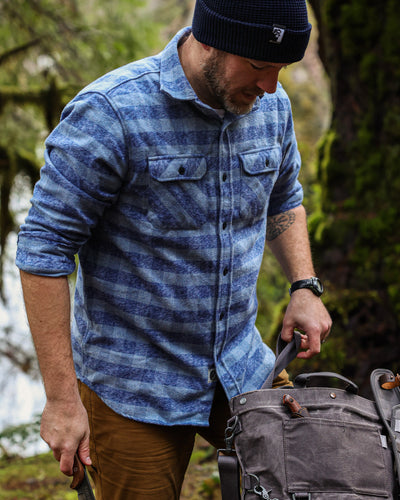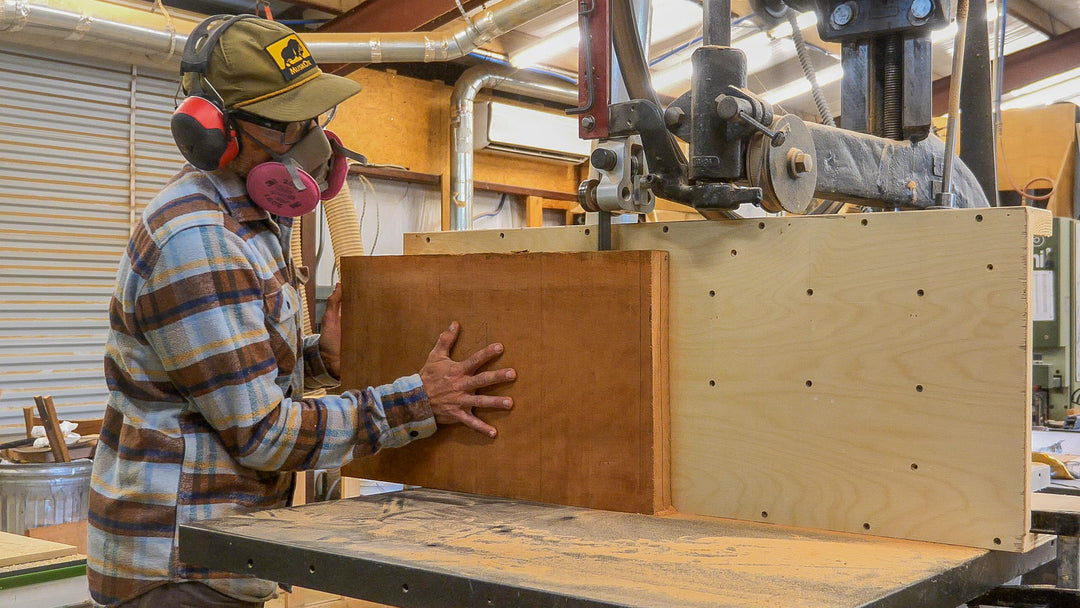Late-Season Skiing Guide by Powder Enthusiasts
Legendary American skiing filmmaker Warren Miller once said: “A pair of skis are the ultimate transportation to freedom.” At MuskOx, we believe that paradise doesn’t have to be a beach oasis – for many members of the MuskOx Herd, paradise is tossing on some heavy outdoor gear, hitting the slopes and spending a day with warm sun on your face and snow beneath your skis.
 Casey Andringa Hitting Moguls in True Late-Season Style — @butteredt0ast
Casey Andringa Hitting Moguls in True Late-Season Style — @butteredt0ast
Like any winter sports enthusiast knows, descending down a snowy slope isn’t about dominating the natural elements: it’s about letting mother nature take the lead. Whether you’re a rookie or a master skier, respecting the terrain and letting it guide your course is the best way to have a meaningful partnership with the outdoors.
The MuskOx mission has always been to prepare our herd for whatever comes their way – we understand that enjoying a full season of skiing means adapting to the evolving intricacies of weather and terrain, especially in the late-season. Maximizing winter means pushing the season as far as it can possibly go, well past February. This may require exploring our planet for the perfect snow, and modifying your skiing style and gear to account for the changing climate and moisture.
We caught up with fellow herd members whose lives revolve around the sport. Some call skiing a profession where their communities are uniquely positioned on the mountain, and some are extreme hobbyists who obsess day-to-day and pursue the snow. For all of them, the outdoors (and winter sports) is a way of life, a calling, and a thrill ride like no other.
 Chanć Deschamps-Prescott at Snowbird & Freerider Setup — @chancdp
Chanć Deschamps-Prescott at Snowbird & Freerider Setup — @chancdp
Chanć Deschamps-Prescott — Professional Freeride and Big Mountain Skier
Where are you top 3 late-season destinations, and how does the snow and weather change through the season?
My top 3 favorite resorts to ski in February to late-season are definitely Alyeska, Squaw Valley and Snowbird. These three mountains are so different, Alyeska is steep, and beautiful. Squaw has great weather and lots of resort to ski. Snowbird has insanely long and steep runs with lots of playful features.
Earlier in the season can be a good time but you have to deal with hidden rocks and shrubs that can take you down. As the season progresses the snowpack gets more reliable typically and the coverage is a lot safer. Another factor is increased daylight later in the season especially in Alaska. Late-season is really fun because the snow is softer and more forgiving but as you get warmer and warmer temperatures it can start to get sticky which is no fun and can be dangerous.
 Chanć Deschamps-Prescott Clearing Rocks in Taos Ski Valley in March — @chancdp
Chanć Deschamps-Prescott Clearing Rocks in Taos Ski Valley in March — @chancdp
How does your skiing style and equipment change in the late-season?
Usually you are wearing heavy gear early in the winter and lighter gear in the spring, even a swimsuit if you want some early summer sun! During mid season I like to do my biggest airs because typically that's when we have the most coverage and powder days. Then as the season progresses I start to go into the park because the landings are getting softer and safer for getting air. Park City is especially fun in the Spring season.
Where's the best late-season snow, and what distance have you gone to ski it?
Best snow in the mid to late season is tough to say but Alyeska the last few years has consistently had some great seasons for snow. When it dumps it is a ton of fun but it tends to get rough and hard usually because of the moisture in the snow. However in Utah when it snows the skiing stays great for a long time. Unfortunately, Utah's snowfall is not as consistent as Alyeska but when it is good it is really fricking good. I have driven many hours and flown many miles to chase snow, depending on how bad I want it – I have driven up to 16 hours in a day and I would say it has been worth it every time.
Listen to an extended Herd Has Spoken interview with Chanć Deschamps-Prescott
 Casey Andringa Taking a Dip & Skiing Japan's Kiroro Resort — @butteredt0ast
Casey Andringa Taking a Dip & Skiing Japan's Kiroro Resort — @butteredt0ast
Casey Andringa — Olympian & American Freestyle Skier
Where’s your go-to spot for skiing the late-season?
Best spot to ski in February is hands down Japan. However, I don't think I will be getting out there for some time, partially due to covid, partially because it's one expensive ass flight, so my answer has to be Telluride, CO. But Telluride is pretty much great anytime of the year.
Where I am from, the weather patterns are pretty sporadic all season long. We almost always get dumped on in early January, followed by a big dry spell. Usually however once we get into February we start to get some of those good mid-winter storms, which tend to drop slightly heavier snow as the season progresses.
While everyone loves light pow, the slightly heavier stuff sticks around longer and covers that crunchy base a bit better. Do be aggressive when that snow starts to get heavy and clumps up, the last thing you want to do is get caught backseat and shying away from it!
Any tips on skiing technique? Gear essentials or making sure you’re the freshest out there?
Work those boots and the tip! Flex that boot for all its worth, and feel any sort of turn you make coming from the front of that ski. Not only will you look like the sickest skier on the mountain, but you’ll be able to handle just about anything the mountain can throw at you.
Gear essentials: Helmet (duh), my MuskOx Foundation base layer (with zip chest pocket!), mittens (no matter the temperature you always look cooler in mittens), and a good balaclava that goes under your helmet and covers your face to protect from that sun! In all honesty, my ski gear doesn't change much throughout the season. On colder days I will wear a hoodie under my jacket, and as the temps warm up maybe lighten it up to a long sleeve shirt but that’s really the only thing that changes. If I am feeling super crazy maybe I even ski in a hoodie, shirtless, or in my favorite long sleeve MuskOx base layer.

 Casey Andringa Teaches Us High Flying Style — @butteredt0ast
Casey Andringa Teaches Us High Flying Style — @butteredt0ast
Where's the best late-season snow, and what's the scene like there?
Since Japan is a bit off limits these days (again, COVID). Telluride gets awesome late-season snow, sometimes. Other times it doesn't. However, even when the snow is less than ideal, that mountain is steep as can be and has a ton of ripping steep groomers. Also, the entire town is within walking distance, and is one of the few spots in Colorado that still has that nice ski town vibe that we all look for.
Telluride is a mere 7 hour drive from where I grew up. While they have an airport, it is a pretty sweet spot in Colorado, and the drive down there is part of what makes it magical. It is one of those spots you have to work for a bit more, and when you get there, it is every bit worth it.
Listen to an extended Herd Has Spoken interview with Casey Andringa
 Nicole Geils Skiing Schweitzer & Mountain Ride — @sheskiis100
Nicole Geils Skiing Schweitzer & Mountain Ride — @sheskiis100
Nicole Geils — Head of Security, Dirty Birds Ski Club, Alyeska Resort
Where's the best late-season snow, and what's the scene like there?
In my opinion, the best snow in February through the late season is Alyeska Resort. It is also my hometown! The resort is nestled in the quaint ski-town of Girdwood, Alaska, just 40-miles south of Anchorage along Turnagain Arm. It is part of the Chugach Mountain Range and features the northernmost coastal temperate rainforest.
Alyeska Resort is the only ski resort in North America to boast mountain, glacier, and ocean views so the photography opportunities are endless. I’ve skied the snowy slopes of Mt. Alyeska every season over the last 37 years, and I am still in awe of its beauty.
The laid-back culture is welcoming to Heli-adventures, extreme black-diamond junkies, dirtbags, powder hounds, and families alike. Locals and visitors enjoy amazing restaurants, dive-bars, winter fat biking trails, Nordic trails, artisan galleries, a lively local music scene, wildlife sanctuary, and one local brewery. (And very soon, a Nordic Spa!) With the resort opening at 10:30AM December – March, and 11AM in April & May, you can hit the après scene, and still wake-up early enough to get fresh pow-turns the next day!
One of the things I am most awed-by daily are the sheer number of AMAZING skiers and riders on the slopes! The outer areas demand a certain skill set that is a thrill to be a part of. The North Face, High-Traverse, Silver Bowl, Head Wall (if you are fortunate enough to hit an opening), and Max’s have steep terrain that include chutes, cliffs, trees, bowls, and fields of powder making for the turns of your dreams.
When I die, Alyeska will be written on my soul.
How do the weather patterns and snow change from early to the late-season?
Alyeska’s snowfall has a heavier water content, allowing it to stick better to the steep faces of the Chugach Mountains. “Steep and deep” is a common phrase to describe the riding experience at Alyeska. With an average snowfall of over 650” a season and 1,610 skiable acres, Mt. Alyeska does not disappoint. February is one of the biggest snowfall months at Alyeska Resort, with 2017 recording 200” of snowfall in the month of February alone! The resort’s base elevation is 230’, thus the snow conditions can vary widely from base to summit. For all you expert-level skiers & riders out there, let’s chat upper-mountain snow conditions. The February snow up-top is soft and dreamy, with the average temperature during snowfall ranging from 18° - 28°F.
Be ready for low-vis stormy skiing, with free refills on world-class terrain during the month of February.
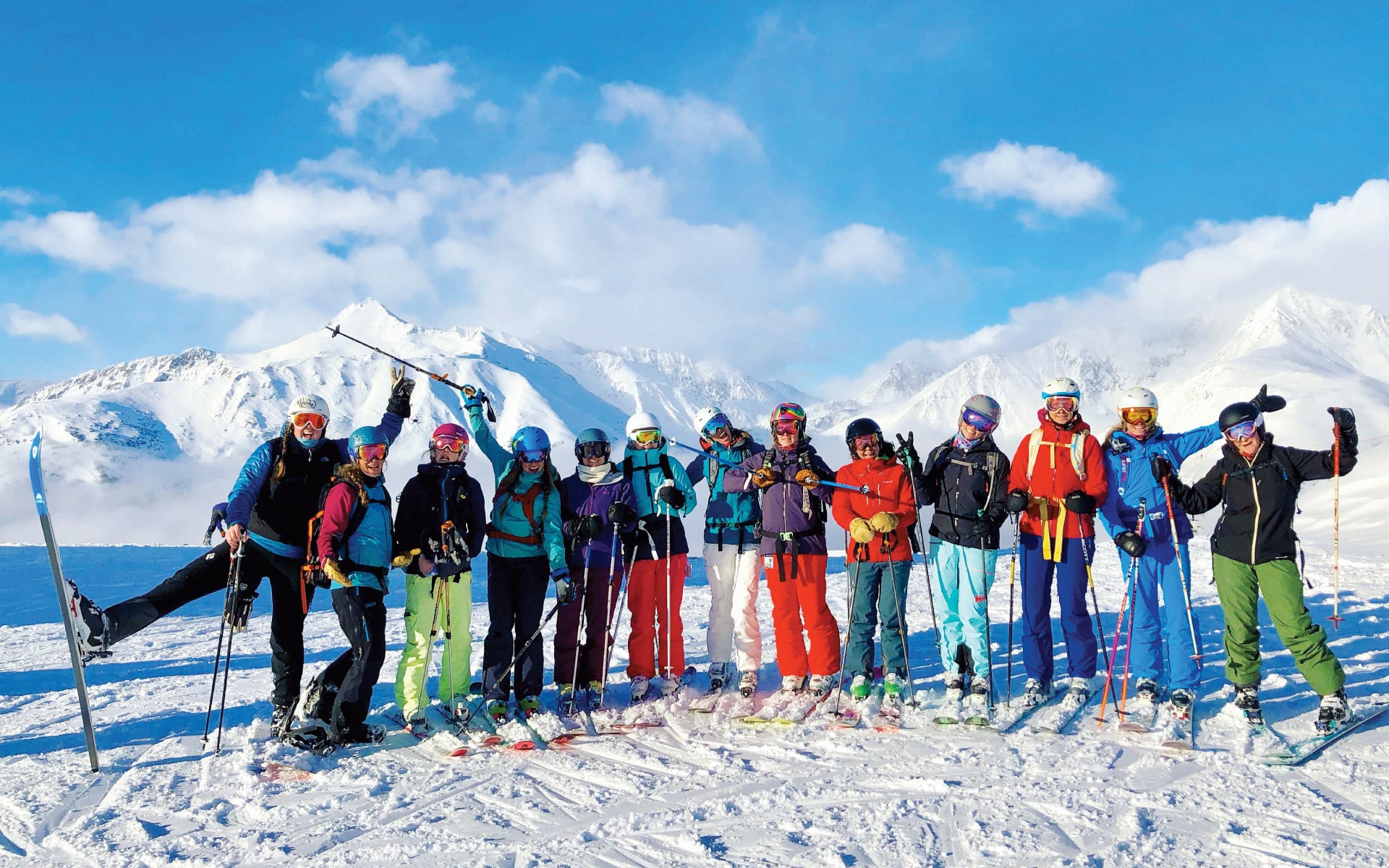
 Alyeska Resort's Dirty Bird Ski Club & Slush Cup — @sheskiis100
Alyeska Resort's Dirty Bird Ski Club & Slush Cup — @sheskiis100
Any pro-tips for skiers traveling from the lower 48?
For late-season, Alyeska Resort is still your best option, with powder-days coming in strong through April! End of April through May boasts creamy-corn snow turns under the sun. Closing day of the 20/21 season (May 24, 2021), there was enough coverage to ski to the base without worrying about bare spots and core-rock-shots to your set-up.
In April & May, I like to fat bike in the morning while letting the sun prep the slopes for a prime corn harvest late in the afternoon and into the evening. Due to the fact that the average temperature is rising (April H: 43 / L: 28 ; May H: 53 / L: 36) I tend to drop an underlayer and re-apply sunscreen often! As we all know, on a sunny-spring day base layers tend to become outer layers!
What memories make the late season special?
My favorite late-season memories revolve around the camaraderie and show-boat vibe of spring skiing. Everyone’s legs are strong from their many days on the slopes, and the stoke is high. Costumes, whooping, hollering, and all-around fun times are had by all. The Glacier Bowl Express high-speed quad elevates skiers and riders over some of the best terrain on the mountain, so the cheers from the chair are always very lively during your descent. The cherry on top of the spring-vibe is the Annual Slush Cup. The Alyeska Resort Events Crew always build an epic pool for skiers & riders to skim, in costume, in front of thousands of spectators who are eager for a wipeout.
Learn more about Nicole Geils' wildlife conservation efforts

Jake Sigal Skiing Vail in a MuskOx Flannel
Jake Sigal — Entrepreneur, Tech CEO & Vail Enthusiast
Where’s your escape from the Midwest when you’re in search of the best snow?
My typical move is to spend 4-6 weeks out in Vail working remotely after CES through the end of February. At that point, the cycling season starts to come back in Michigan, and I come back to Detroit. I usually get 1-2 ski trips lasting 3-4 nights each in March. I’m looking for a deeper snowpack for good spring conditions for these trips. Pre-pandemic Whistler was an easy goto. Nowadays, I look at Alta, Park City, or Tahoe.
What's your powder day protocol and work/life balance look like when managing a company remotely from the mountain?
A friend once told me that you get to work half-days as a startup CEO. You just have to pick which 12-hrs you want to work. That’s so true. I like to stay in the eastern time zone and get a 7-hr work block from 8-3 eastern, getting a couple of hours in alpine, and then throw the skins on for a tour up to the top and down with a headlamp.)
After getting home and some nutrition, I get back into the command center to clean out email and work blocks. Get some sleep, then repeat!
Pre-pandemic, about half of my meetings were in-person. Now I’m about 5% of my meetings in-person. This allows me to work remotely and not miss a beat. I don’t know how long that’s going to last but I’m trying to take full advantage of it. In a weird way I prefer the in-person meetings and miss the old days where I would only be able to dip out for 4-5 trips lasting 3-4 nights each (usually over long weekends).
 Jake Sigal On A Powder Day Extended Lunch Break
Jake Sigal On A Powder Day Extended Lunch Break
What technology, gear, and clothing are you using on the slope?
The MuskOx Foundation is my go-to for the day. It works very well on video meetings and transitions well to the mountain. Sometimes I throw a Field Grand Flannel over an undershirt. I’m using a Garmin Fenix for on-mountain electronics, which has excellent support for alpine and alpine touring. I have my data synced to Strava and Training Peaks. Garmin automatically calculates the downhill runs, and I use an external chest HR monitor to keep my watch on the outside of my Foundation shirt.
I’m a huge fan of the Marker Duke PT16s. It allows me to have all the confidence (and safety) of a full alpine binding in the resort and then quickly switch to touring when the lifts stop, and the fun starts. It’s a lot heavier than going with a proper technical binding, but I’m not Skimo racing (yet), so for being time-efficient, it’s perfect for me. I’m also a big fan of the new Freeride boots with the ISO Grip Walk soles. I don’t bring shoes anymore, and I have the combined technical + alpine mounts. Full Send!
Listen to an extended Herd Has Spoken interview with Jake Sigal


